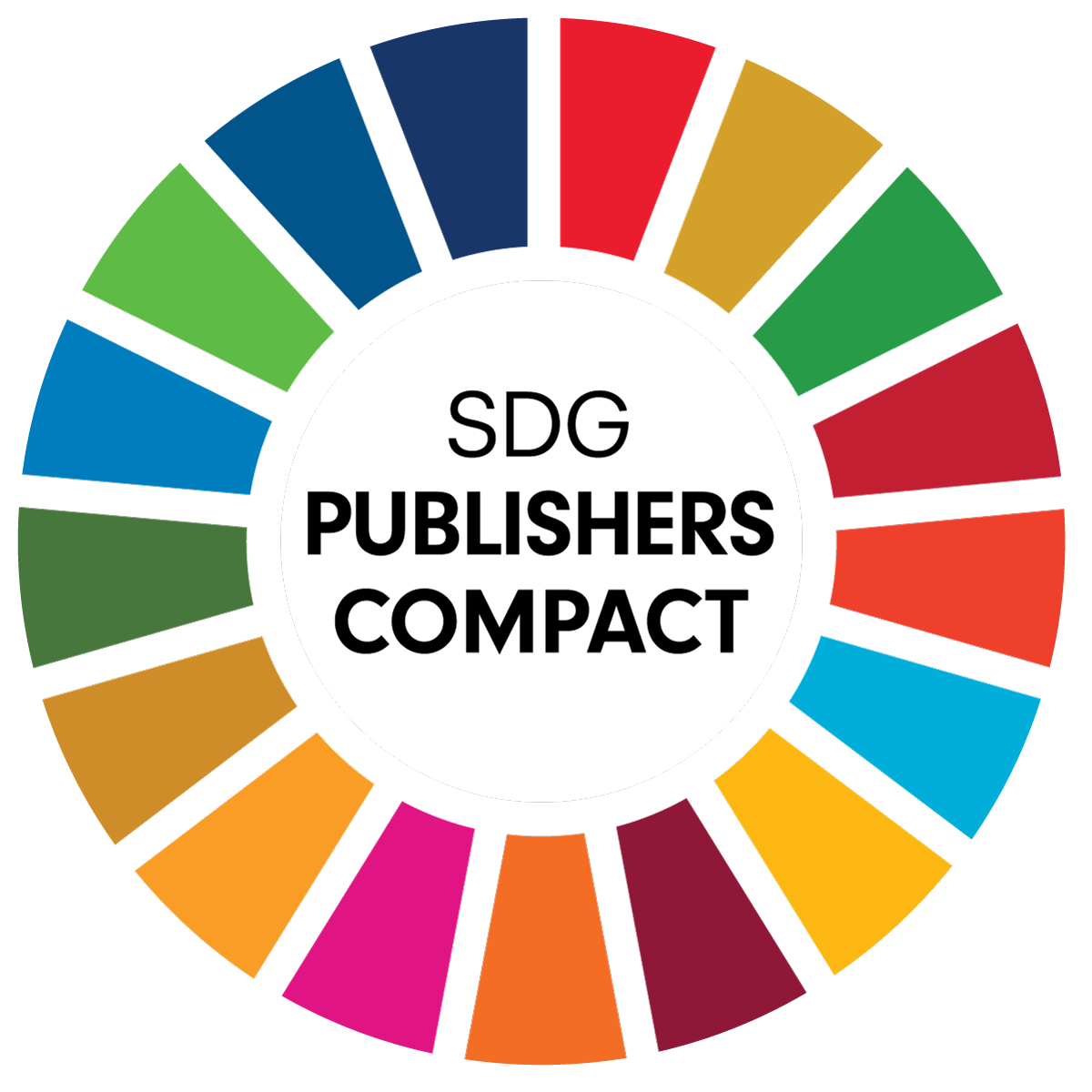The Impact of Liberalisation on Women’s Economic Participation and the Incidence of Gender Equality on Morocco's Economy: A Gender-Sensitive CGE Model Analysis
-
Yassine EL HAJOUI Laboratory of Economic Analysis and Modelling (LEAM), Mohammed V University in Rabat, Morocco
-
Radouane RAOUF FSJES-Souissi, Laboratory of Economic Analysis and Modelling (LEAM), Mohammed V University in Rabat, Morocco
-
Adil EZ-ZETOUNI Laboratory of Mathematics, Faculty of Sciences and Techniques, Cadi Ayyad University, Marrakech, Morocco
-
Nabil El BAOUCHARI FSJES-Souissi, Laboratory of Economic Analysis and Modelling (LEAM), Mohammed V University in Rabat, Morocco
The labour market participation of Moroccan women remains significantly lower than that of men. This issue has sparked academic and political debates in recent years. Numerous studies suggest solutions, including evaluating the effects of trade liberalisation on female employment. Using a gender-sensitive computable general equilibrium (CGE) model calibrated to Morocco's 2019 Social Accounting Matrix (SAM), this study simulates the impact of trade liberalisation on women's employment and wages.
The results of this study show that full national liberalisation is pro-feminine in competitive and female labour-intensive sectors. However, it disadvantages women in less competitive and less female labour-intensive industries. This leads us to consider additional policies to stimulate women's employment in these latter sectors. Among these policies, the most effective are those targeting gender equality in social, legal, and financial aspects.
These policies yield favourable labour market outcomes: increased female labour supply in various sectors and a reduction in the gender wage gap. However, they have unfavourable macroeconomic consequences, such as production, exports, income, and investment declines. This is mainly due to the low productivity of Moroccan women compared to their male counterparts. This leads to the following conclusion: any policy aiming to increase women's participation in the labour market in Morocco must be accompanied by initiatives to improve their productivity.
Copyright© 2025 The Author(s). This article is distributed under the terms of the license CC-BY 4.0., which permits any further distribution in any medium, provided the original work is properly cited.
EL Hajoui, Y., Raouf, R., Ez-Zetouni, A., & El Baouchari, N. (2025). The impact of liberalisation on women’s economic participation and the incidence of gender equality on Morocco's economy: A gender-sensitive CGE model analysis. Journal of Applied Economic Sciences, Volume XX, Spring, 1(87), 101 – 121. https://doi.org/10.57017/jaes.v20.1(87).07
Aleman-Castilla, B. (2020). Trade and labour market outcomes: Theory and evidence at the firm and worker levels. ILO Working Paper, no 12. https://www.ilo.org/publications/trade-and-labour-market-outcomes-theory-and-evidence-firm-and-worker-levels-1
Aguayo-Tellez, E., Airola, J., Juhn, C. & Villegas-Sanchez, C. (2014). Did Trade Liberalization Help Women? the Case of Mexico in the 1990s, New Analyses of Worker Well-Being (Research in Labour Economics, Volume 38), Emerald Group Publishing Limited, Leeds, pp. 1-35. https://doi.org/10.1108/S0147-9121(2013)0000038001
Arndt, & Channing. (2000). Gender Dimensions of Mozambique’s Post-War Economic Growth: A CGE Analysis. The World Bank. https://documents1.worldbank.org/curated/en/582101468775150061/pdf/multi0page.pdf
Baliamoune-Lutz M., (2020). Commerce et emploi salarial des femmes, Research Paper, Policy Center for the new south, RP-20/21 https://www.policycenter.ma/sites/default/files/2021-01/RP_20-01_Baliamoune%20FR%20%281%29.pdf
Ben Yahmed, S. (2014). International Commerce and Inequalities Between Men and Women. Regards croisés sur l'économie 15(2), 322-326. https://doi.org/10.3917/rce.015.0322
Benguria, F., & Ederington, J. (2023). Decomposing the effect of trade on the gender wage gap. Canadian Journal of Economics/Revue canadienne d'économique, 56(3), 1082-1120. https://doi.org/10.1111/caje.12668
Berik, G., Rodgers, Y. v., & Jr., J. E. (2004). International Trade and Gender Wage Discrimination: Evidence from East Asia. Review of Development Economics, 8(2), 237-254. https://doi.org/10.1111/j.1467-9361.2004.00230.x
Bhargava, A., Jamison, D. T., Lau, L. J., & Murray, C. J. (2001). Modeling the effects of health on economic growth. Journal of Health Economics, 20(3), 423–440. https://doi.org/10.1016/s0167-6296(01)00073-x
Black, S. E., & Brainerd, E. (2004). Importing equality? The impact of globalization on gender discrimination. ILR Review, 57(4), 540-559. https://doi.org/10.1177/0019793904057004
Bloom, D. E., Canning, D., & Sevilla, J. (2004). The Effect of Health on Economic Growth: A Production Function Approach. World Development, 32(1), 1–13. https://doi.org/10.1016/j.worlddev.2003.07.002
Bussolo, M., De Hoyos, R. E., & Wodon, Q. (2009). Higher prices of export crops, intra-household inequality and human capital accumulation in Senegal. Gender Aspects of the Trade and Poverty Nexus: A Macro–Micro Approach, 165-184. https://www.rafadehoyos.com/recursos/Bussolo%20and%20de%20Hoyos,%20gender%20aspects%20of%20the%20trade%20and%20poverty%20nexus.pdf
Ujhelyi, C. J., & Villegas-Sanchez, G. (2014). Men, Women, and Machines: How Trade Impacts Gender Inequality. Journal Development Economics, 106 (C), 179–193. https://doi.org/10.1016/j.jdeveco.2013.09.009
Çağatay, N., Elson, D., & Grow, C. (1995). Introduction. World Development, 23(11), 1827-1836. https://doi.org/10.1016/0305-750X(95)90003-J
Chen, Z., Ge, Y., Lai, H., & Wan, C. (2013). Globalization and Gender Wage Inequality in China. World Development, 44, 256-266. https://doi.org/10.1016/j.worlddev.2012.11.007
Decaluwé, B., Lemelin, A., Maisonnave, H., & Rochibud, V. (2012). The PEP standard computable general equilibrium model single-country, static version. PEP-1-1, Partnership for Economic Policy (PEP), MPIA Research Network. https://www.pep-net.org/methods/macro-modeling/cge-models
El Baouchari, N., & Raouf, R. (2024). Impact of Health on Labour Productivity in Morocco: Insights from dynamic ARDL and KRLS techniques. Journal of Global Sustainability and Development, Volume I, Issue 1, 7 – 25. https://doi.org/10.57017/jgsd.v1.i1.01
Estrades, C., & Terra, M. I. (2011). Fighting Informality in Segmented Labour Markets: A general equilibrium analysis applied to Uruguay. Latin American Journal of Economics, 48(1), 1-37. https://dx.doi.org/10.4067/S0719-04332011000100001
Fleck, S. (2001). A gender perspective on maquila employment and wages in Mexico. In The Economics of Gender in Mexico. Work, Family, State, and the Market, ed. E. Katz & M. Correia, 133–73. Washington D.C.: WorldBank. https://documents1.worldbank.org/curated/pt/288701468121498166/pdf/multi0page.pdf
Fofana, I., Cockburn, J., & Decaluwe, B. (2005). Developing country superwomen: impacts of trade liberalisation on female market and domestic work. https://www.pep-net.org/sites/pep-net.org/files/typo3doc/pdf/Gender4.pdf
Fontana. (2001). Modelling the effects of trade on women: A closer look at Bangladesh. Institute of Development Studies (Brighton), Working, 139 https://www.pep-net.org/sites/pep-net.org/files/typo3doc/pdf/recommended_readings/ WD_vol28_no7.pdf
Fontana, M. (2004). Modelling the effects of trade on women, at work and at home: comparative perspectives. Economie Internationale, 99(3), 49-80. https://shs.cairn.info/revue-economie-internationale-2004-3-page-49?lang=fr
Fontana, M. (2004). Modelling the effects of trade on women, at work and at home: comparative perspectives. Économie Internationale, 99(3), 49–80. https://doi.org/10.3917/ecoi.099.0049
Fontana, M., & Wood, A. (2000). Modelling the Effects of Trade on Women, at Work and at Home. World Development, 28(7), 1173-1190. https://doi.org/10.1016/S0305-750X(00)00033-4
Gaddis, I. & Pieters, J. (2012). Trade Liberalization and Female Labour Force Participation: Evidence from Brazil, IZA Discussion Papers 6809, Institute of Labour Economics (IZA). https://docs.iza.org/dp6809.pdf
Ghiara, R. (1999). Impact of Trade Liberalisation on Female Wages in Mexico: An Econometric Analysis. Development Policy Review, 17(2). https://doi.org/10.1111/1467-7679.00082
Guicheney, W. (2015). South Korea‘s Export-Oriented Industrialization Policy and the Pervasiveness of the Gender-Wage Gap. Undercurrent, 11(2), 14-25. https://books.google.co.ma/books?id=11qzCwAAQBAJ&source=gbs_navlinks_s
Juhn, C., Ujhelyi, G., & Villegas-Sanchez, C. (2014). Men, women, and machines: How trade impacts gender inequality. Journal of Development Economics, 106, 179-193. https://doi.org/10.1016/j.jdeveco.2013.09.009
Fontana, M. (2002). Modelling the effects of trade on women: the case of Zambia, IDS Working Paper 155, Brighton: Institute of Development Studies. https://www.ids.ac.uk/download.php?file=files/Wp155.pdf
Pieters, J. (2018). Trade Liberalization and Gender Inequality: Can Free-Trade Policies Help to Reduce Gender Inequalities in Employment and Wages? IZA World of Labour, article 114. https://doi.org/10.15185/izawol.114.v2
High Commission for Planning (2024). Intersectional analysis of women's participation in the Moroccan labor market. Summary note. https://www.hcp.ma/file/240227/
High Commission for Planning (2013). Moroccan women and the labor market: Characteristics and evolution. https://www.hcp.ma/attachment/2233855/
High Commission for Planning (2014). Employment Satellite Account. https://www.hcp.ma/file/237698/
High Commission for Planning (2024). Social relations between women and men: Insights from time use surveys. https://www.hcp.ma/region-eddakhla/attachment/2278532/
Levine, R., & Renelt, D. (1992). A Sensitivity Analysis of Cross-Country Growth Regressions. The American Economic Review, 82(4), 942–963. https://www.jstor.org/stable/2117352
Raihan, S., Khatoon, R., Husain, M. J. & Rahman, S. (2010). Modelling Gender Impacts of Policy Reforms in Bangladesh: A Study in a Sequential Dynamic CGE Framework. PEP Working Paper Serie 2010-19. http://dx.doi.org/10.2139/ssrn.1698084
Raihan, S. (2010). Informal sector in Bangladesh: implications for growth and poverty. Indian Journal of Labour Economic, 53(2), 251–265. https://www.researchgate.net/publication/293209359_Informal_sector_in_Bangladesh_Implications _for_growth_and_poverty
Raouf, R., Hajar D., & El Baouchari, N. (2021). Impact of AfCFTA implementation on the Moroccan economy: A CGE modelling assessment. GTAP Annual Conference on Global Economic Analysis. https://ageconsearch.umn.edu/record/ 333262/files/10761.pdf
Stolper, W. F., & Samuelson, P. A. (1941). Protection and real wages. The Review of Economic Studies, 9(1), 58-73. https://doi.org/10.2307/2967638
Terra, M. I., Bucheli, M. & Estrades, C. (2008). Trade Openness and Gender in Uruguay: A CGE Analysis (November 1, 2008). PEP Working Paper Serie 2008-16. http://dx.doi.org/10.2139/ssrn.3171499




